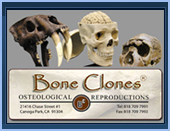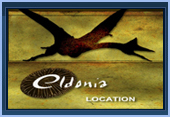- 학명 Scientific Name : Sinosauropteryx prima
- 형태 Mode : 판형 Board
- 시대 Age : 전기 백악기 Early Cretaceous
- 크기 L×W×H (m) : 0.6m×0.3m×0.1m
- 원산지 Location : 중국 요녕 Liaoning
Sinosauropteryx prima("First Chinese Dragon Feather")
Sinosauropteryx was a theropod dinosaur covered with proto-feathers. It dated from the late Jurassic period to perhaps the early Cretaceous period, roughly 121-135 million years ago. Two specimens of the fossil have been found in 1996 in
- Archaeopteryx - The oldest known bird (150 mya) had asymmetrical feathers - it could probably fly short distances (from
- Sinosauropteryx - covered with proto-feathers and with short arms (121-135 million years ago).
- Protarchaeopteryx - Long, symmetrical feathers on arms and tail, but it probably could not fly (from
- Caudipteryx - a small, very fast runner covered with primitive (symmetrical and therefore flightless) feathers. (from
- Unenlagia - a much larger ground-dwelling theropod (from
- Velociraptor - a larger, ground-dwelling carnivore from
- Eoalulavis (from
FEATHERS
Sinosauropteryx is the first dinosaur fossil ever found that showed evidence of having feathers (albeit primitive). This fossils was not a bird, however, but was a theropod dinosaur. Sinosauropteryx could not fly; its feathers were probably used for insulation, keeping the dinosaur warm.
ANATOMY
Sinosauropteryx had downy feathers along its back and sides, forming a mane-like tuft on the back of its head. It was about 4 ft (1.25 m) long with 2mm long feathers - it was bipedal, walking on two long legs. It was 11.4 inches (29 cm) tall at the hips and weighed about 5.5 pounds (2.5 kg).
The longest feather-filaments were 1.5 inches long (3.8 cm). These filaments were probably used for heat insulation and were not used for flying.
It had two short fore-limbs (arms), and many sharp teeth. It ate meat like other theropods, and probably preyed upon small animals and insects. It also had a very long tail, the longest (relative to its size) of any theropod - the tail had 64 vertebrae. This tail was probably used for balance and for making quick turns.
DIET
Sinosauropteryx was a meat-eater and is the only dinosaur that has been found with a mammal in its stomach. Only the jawbone of this unidentified mammal was found in the Sinosauropteryx gut.
FOSSILS
Sinosauropteryx was found by Chinese farmers, including Li Yin Fang, in 1996 in the dry countryside near
Three complete skeletons of Sinosauropteryx have been found, including trace fossils of small fibers (protofeathers), stomach contents, unlaid eggs, and some internal organs.
BIRDS AND DINOSAURS
The existence of Sinosauropteryx lends credence to the theory that the birds are descended from theropod dinosaurs and not from four-legged arboreal (tree living) reptiles.
OTHER FEATHERED DINOSAURS
Two new Chinese feathered dinosaurs dating from between 145 and 125 million years ago (during the late Jurassic and early Cretaceous periods) have been found in the same area of
CLASSIFICATION
Sinosauropteryx belonged to the:
Kingdom Animalia (animals)
Phylum Chordata (having a hollow nerve chord ending in a brain)
Class Archosauria (diapsids with socket-set teeth, etc.)
Order Saurischia - lizard-hipped dinosaurs
Suborder Theropoda - bipedal carnivores
Infraorder Coelurosauria - lightly-built fast-running predators with hollow bones and large brains
Superfamily Maniraptoriformes - advanced coelurosaurs with a fused wrist bone
Family Compsognathidae
Genus Sinosauropteryx
Species prima (the type species).











































 수량을 선택해주세요.
수량을 선택해주세요.





































